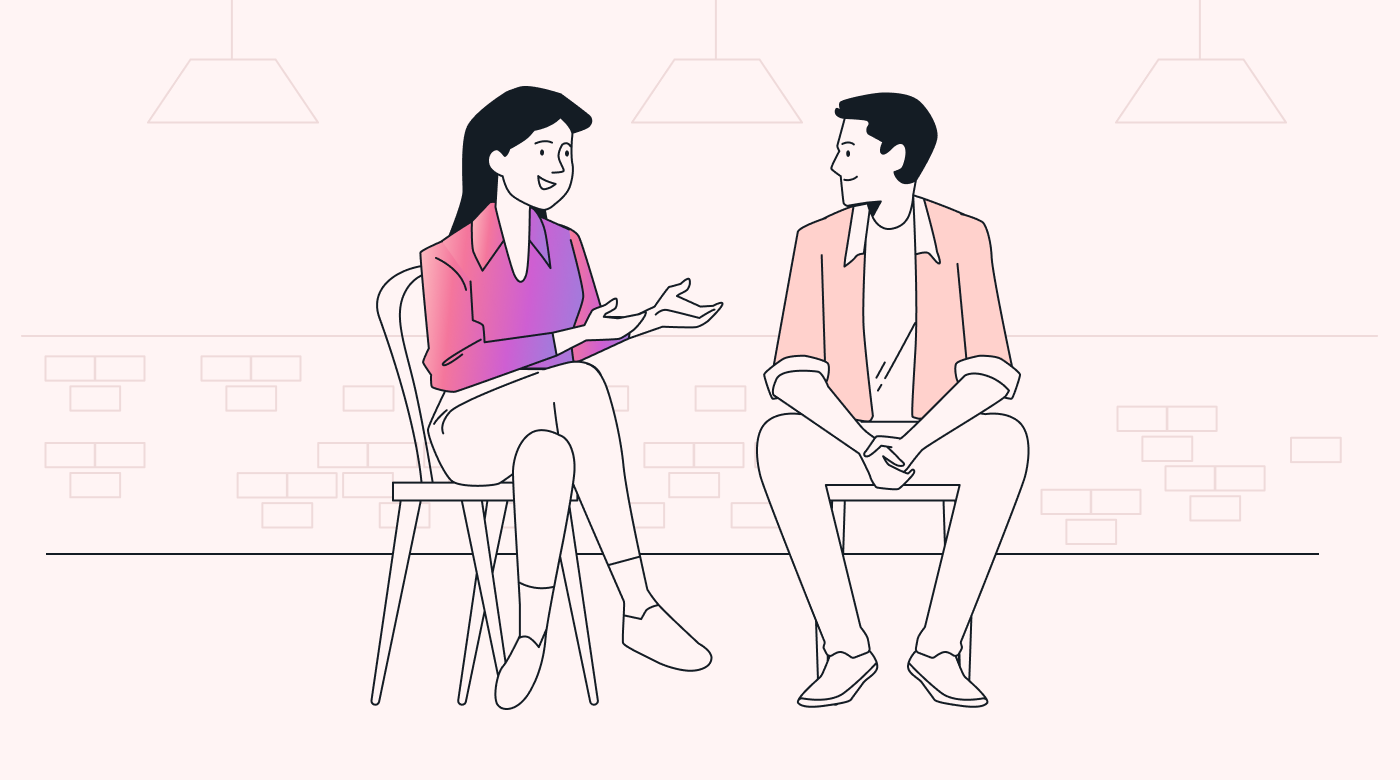Conflict has always been a part of the human condition. It’s as inevitable as it is powerful and can be damaging or incredibly beneficial. That’s right. The effects of task conflict can be positive or it can be negative, depending on two things:
- How we choose to manage conflict.
- The mindset of the people involved.
So, what is a task conflict? It’s just a difference of opinion on how a particular task should be approached and completed. Nothing more. But where it gets complicated is in how we react to the conflict.
As managers and business owners, we must be careful not to see a difference of opinion as a personal attack. Most of the time, the people working with us will genuinely be trying to find a better way to do things or want to improve the systems they’re working with.
Common causes of task conflict
Task conflicts can come from anywhere. It could be something as simple as competing priorities, two solutions to the same problem, or two ways to do something. Or an ambiguity in their role in your organization may confuse a team member.
Personality clashes are another common cause, as are different work styles. In a fast-moving business environment, resource constraints can also be a trigger. Change and uncertainty are also common causes.
What all these things have in common is that they’re often tiny problems or issues that get blown out of proportion.
Conflict in the workplace
Task conflicts aren’t the only type of workplace conflict. It can take many different forms and is inevitable. And the Covid pandemic didn’t help either. That resulted in a new suite of workplace challenges as the need to work remotely took center stage.
Relationship conflicts
These types of conflict are inevitable in teams, and the more diverse the team, the more likely they are to arise. The trigger for relationship conflicts can be anything from differences in personality, style, matters of taste, and even conflict styles.
Also known as interpersonal conflicts, they can be very difficult to anticipate and deal with. That's because resentments can lie buried and simmer for a long time before they are suddenly triggered by something that happens at work.
It could be as bad as an employee claiming to have been sexually harassed at work. Or a relationship conflict could be caused by something as simple as a clash of personalities.
Process conflicts
This type of conflict may appear similar to a task conflict because it also relates to a disagreement over how a task should be accomplished. However, where task conflicts revolve around the content or outcomes, process conflict is about how tasks are accomplished and the allocation of roles.
It can be about who should be involved in a process, how to make a decision, or even where to meet to make it. It could also be about the rules to be followed in the process. A good example would be managers arguing over how to set a fair vacation policy.
Value conflicts
This is the trickiest of the different types of conflict to handle. This is because it usually arises from differences in identities and values. That can include fundamental differences in politics, religion, ethics, norms, and other deeply held beliefs.
Most organizations preach tolerance and actively discourage discussion of politics and religion. But these subjects can still cause conflict. Disputes over values can also come up in decisions about internal policies.
For example, a value conflict can arise when deciding whether to start an affirmative action program. And it could come up in discussions about taking on a new client with links to a corrupt entity or government.
What is conflict resolution?
The Program on Negotiation at Harvard Law School defines conflict resolution as how two or more parties find a peaceful solution to a dispute. It's usually achieved with negotiation and can result in a win-win — where all parties find value.
But the process harbors cognitive and emotional traps. These might escalate the conflict rather than resolve it. For example, self-serving fairness interpretations may delay or prevent resolution. This is where a person interprets what would be most fair to themselves rather than trying to see the dispute from all sides.
Another common pitfall is overconfidence, which can lead to us setting unrealistic expectations. And negotiators may inadvertently escalate their commitment to a chosen course of action long after it’s outlived its usefulness.
Similar traps can be found in conflict avoidance, mediation, arbitration, and litigation.
Conflict management styles
Walden University’s Dr. Barbara Benoliel identifies five distinct conflict management styles and writes that there is no wrong or right one. Each approach has its own benefits. However, the key is to know when and how to use each style. That could help you control conflict and will almost certainly lead to a better working environment.
Collaborate
Adopting a collaborative conflict management style requires you to be assertive and cooperative. The idea is to work with everyone involved to identify a solution that fully satisfies their concerns.
The primary benefit of this style is that all sides can get at least some of what they want, which means that negative feelings are minimized. It works best when the focus is on a long-term relationship and outcome.
The key is to get everyone into a room — physically or virtually. You’d then need to turn it into a safe space where everyone feels free to discuss the issue. All parties are encouraged to practice active listening and, after a time, negotiate an acceptable solution.
The disadvantage of this style is that it requires a lot of time and energy to succeed.
Compete
This style can also be described as the burning bridges approach. It’s only appropriate when the relationship doesn’t matter, and the outcome is the only important factor. Using it requires being assertive, uncooperative, and looking for a selfish end result.
Dr. Benoliel cautions that this style should only be used outside of your own organization, where you don’t care about a future relationship, but the outcome is important. A good example would be going head-to-head with a competitor to land a new client.
It’s a win-lose scenario because this conflict’s resolution is based on a clear winner and loser.
Avoid
The third conflict management style is avoidance. This style is appropriate when postponing dealing with a situation is safer. It’s also useful when the outcome isn’t of too much concern to you or your business.
It’s a handy strategy when dealing with someone you know will see your avoidance as a diplomatic withdrawal. That can often trigger a bit of self-reflection, which may lead them to pull their horns in and de-escalate the situation themselves.
However, the strategy could backfire if you don’t know the person well. It could make you seem uncaring about the issue and unwilling to take responsibility.
Accommodate
Often confused with avoidance, being accommodating can work in certain conflict situations. However, it can be risky because it demands that you sacrifice something. And down the line, it may be taken as a weakness on your part, leading others to try and take advantage of you.
Dr. Benoliel advises using this style when you don’t care much about the outcome but want to preserve or build a relationship. She illustrates this dynamic by going out for lunch with the boss and agreeing to a restaurant or cuisine you don’t necessarily enjoy.
The danger is that the process can result in a false solution to a problem and create feelings of anger as a result.
Compromise
Another similar but still different approach is to compromise. It’s different because it involves sacrifice on both sides and is akin to bargaining. That’s something familiar that humans have been doing for thousands of years. The objective was to find a practical and mutually acceptable solution. It’s the same goal now.
All parties to the conflict give away something for the greater good. This offers some satisfaction for all while remaining assertive and cooperative. It’s appropriate to use when the outcome isn’t critical, and you are losing time on a project or with a decision.
Why conflict can be good
The natural human reaction is to see conflict as a bad thing, but that’s not necessarily true. According to Linda Adams, human resources specialist and president of Gordon Training International, they're quite normal, natural, and even inevitable.
She observes that we have a negative attitude toward conflict because we don’t have constructive ways to deal with it. Not only that, we have often learned destructive ways of handling conflict through our life experiences as students, employees, and even spouses. We’ve lost battles with parents, teachers, and bosses who used authority to win at our expense.
But it doesn’t have to be that way.
What is a healthy conflict?
You can resolve a positive conflict productively and constructively to benefit all involved. This brings us back to task-based conflicts, often where we’ll find the greatest opportunities to improve our processes and systems.
But no cookie-cutter method of resolving task conflicts applies to every situation. There are far too many variables for that. The cause and effects of task conflict are different in every case, and, much of the time, so are the people involved.
The challenge for business leaders and managers is to quickly determine which conflict resolution style has the best chance of success.
Sometimes, you can’t shut it down
The instinct of managers when on the outside of a task conflict scenario is to jump in to shut it down quickly by negotiating a settlement. But it’s not always practical.
Sometimes, you must separate the protagonists and return to the conflict scenario once the emotions have subsided. You can do that by assigning other tasks in other locations if necessary.
Conflicts encourage a growth mindset
Oddly enough, businesses and teams can benefit from task conflicts and sometimes other conflict types in the workplace. It’s how we’ve grown as a species. Conflicting ideas encourage creativity, often leading to new or better ideas and solutions.
There are four clear benefits to be reaped if you manage them effectively. You can achieve greater process efficiency, improved trust within your team, growth in emotional intelligence among team members, and better alignment.
Using technology to help
Communication is critical in managing task-based conflicts, and you can use digital tools like Motion to make it more accessible and efficient across your team. The system provides direct messaging and commenting channels that enable easy and open communication whenever and wherever.
Motion’s real-time progress tracker allows your team to stay in control of their individual projects and tasks. The transparency it offers makes giving evidence-based and constructive criticism easier, minimizing the risk of feedback being seen as a personal attack.
The AI-powered Motion team calendar boosts collaboration by grouping important dates, tasks, deadlines, and milestones in one place. Direct communication channels let team members share updates and discuss and resolve any issues.
Motion helps team growth
As we’ve seen, workplace conflicts are unavoidable and an opportunity for growth. We’ve also learned how technology helps us manage positive conflicts for the best outcomes while enabling us to take the edge off negative conflicts.
Motion’s intelligent calendar helps to keep your team organized and aligned. It does this with automated scheduling based on task delegation and prioritization, which helps to streamline workflow. Tracking project progress in real-time also keeps team members accountable and helps you to anticipate when conflict may occur.
That enables you to manage it to the best advantage of the team and the business. With Motion, conflict management and resolution becomes a rewarding and collaborative process for your team. Try Motion’s 7-day free trial and check it out for yourself!









